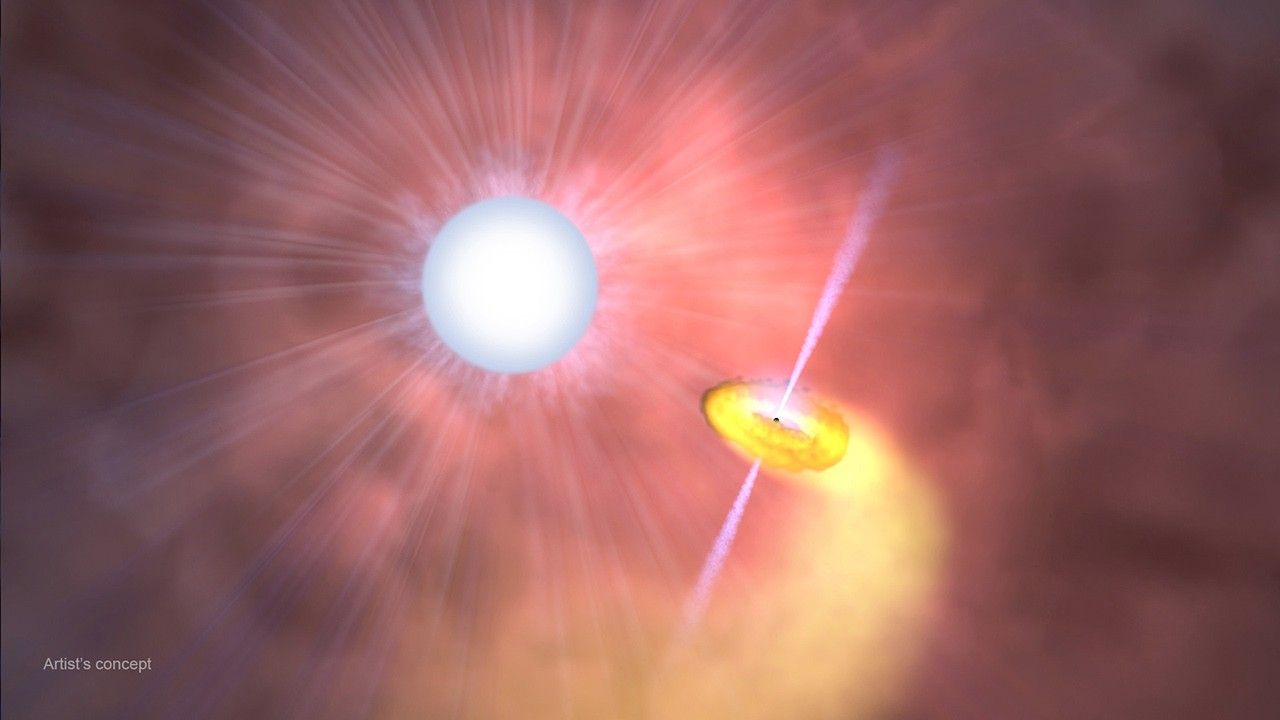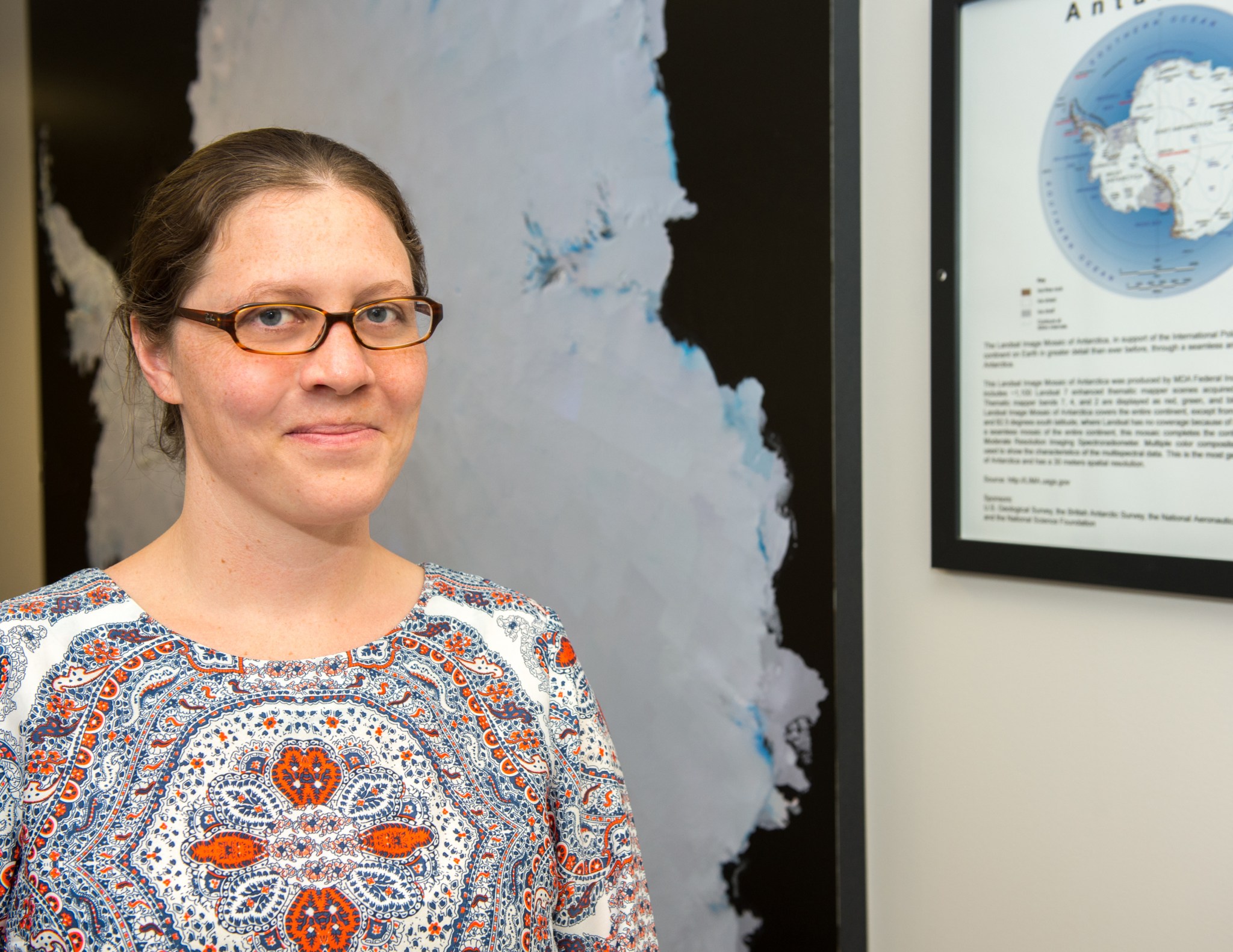Name: Sophie Nowicki
Formal Job Classification: Physical Scientist
Organization: Code 615, Cryospheric Sciences Laboratory, Earth Sciences Division, Sciences and Exploration Directorate
What do you do and what is most interesting about your role here at Goddard? How do you help support Goddard’s mission?
I’m a glaciologist and I study the big ice sheets of Greenland and Antarctica. I want to understand how in the future they will evolve and contribute to sea level change. I use my models together with NASA’s climate models to make global projections of future sea levels.
I use data collected by NASA in my models to check how the models compare to the real world. For example, I use data from airborne observations from Operation IceBridge and data from Ice, Cloud, and land Elevation (ICESat) satellite and the Gravity Recovery and Climate Experiment (GRACE) satellite. Operation IceBridge is an airborne campaign that takes lots of different measurements, including the bedrock and the ice elevation in and around Greenland and Antarctica. ICESat was a satellite that measured ice sheet elevation of the Greenland and Antarctic. GRACE is a satellite that measures the mass change of the Greenland and Antarctic ice sheets.
How do use your numerical models in conjunction with the climate models?
Our numerical models add a new capability to NASA’s existing climate models because the climate models now include interactive ice sheets. We also modified the snow models that sit between the atmosphere and the ice sheets. This allows us to better capture the surface conditions over the ice sheets such as the snow melting identified by the satellites or the surface temperature over the ice sheets.
We work with a tremendous amount of data. We assimilate all this data and make projections using NASA’s two supercomputers. One is at NASA’s Goddard Space Flight Center in Greenbelt, Maryland, and the other is at NASA’s Goddard Institute for Space Studies (GISS) in New York City.
Do you work both at Goddard and at GISS?
Yes, but I physically spend most of my time in Greenbelt. I don’t have to go to GISS in person to do my work. The great thing about technology is that you don’t have to be in the same physical space to work with others. I have a post-doctoral fellow at GISS and we communicate constantly via Skype, emails and the phone. Both of us use the same supercomputer. My post-doctoral fellow also comes to Goddard a few times a year plus we meet at conferences throughout the year.
Do you lead climate model teams at Goddard?
I lead a team based at Goddard called the Interdisciplinary Science Team (IDS). We look at the recent changes in the Arctic to understand the impact and feedback of recent ice melts. Some of the changes we look at are the sea ice, clouds and aerosols and how these affect surface conditions on the Greenland ice sheet. We also try to understand how the increase in melting at the surface of the ice sheet changes the ocean, via freshening (change in the amount of salt in the water) for example, or how changes in sea ice or fresh water from the ice sheet affect phytoplankton production.
Are you involved with teams at an agency level?
I’m part of the NASA Sea Level Change Team, which has members from NASA centers and also from U.S. universities. Our goal is to understand how sea level is changing and better communicate that information to the public. The website is: https://sealevel.nasa.gov/
Do you collaborate internationally?
I travel internationally a few times a year, mainly to England and France. I co-lead an international effort called Ice Sheet Model Intercomparison Project for CMIP6 (ISMIP6, http://www.climate-cryosphere.org/activities/targeted/ismip6). Our steering committee includes eight other scientists and our members include scientists from the U.S., Japan, England, France, Denmark, Germany, Belgium and Russia.
ISMIP6’s goal is to make better projections of global sea level rise. My role is to coordinate the effort and set the big picture. Our participants work with approximately 10 different global climate models that all include an interactive ice sheet component or will soon include this capability. We also have about twenty ice sheet models that are run outside of climate models. We will be combining the simulations from all thirty models. Our final products can be maps of future sea levels due to the ice sheets or numbers associated with possible future sea levels.
Are your group’s projections incorporated into an international report?
Yes, our group’s work becomes part of the International Panel on Climate Change’s report, which generally comes out every five years. Their next report, the Sixth Assessment Report (AR6), is planned for 2022. ISMIP6 is the first time that a large coordinated effort focusing on ice sheet and climate models will contribute to the IPCC report.
Did you always want to be a scientist?
Although both are now retired, my father is an American environmental scientist and my mother is a French environmental scientist. I wanted to be an artist or an architect, but my parents encouraged me to do science. For me, art and science are quite similar as they both require a lot of creativity.
Where were you educated?
I was born in northern France. I went to the University of Edinburgh in Scotland for an undergraduate degree in geophysics and a master’s degree in remote sensing and image processing. I then went to the University College London for a doctorate and post-graduate studies in glaciology.
How did you come to work at Goddard?
I was at a scientific conference in St. Petersburg, Russia, where I met Jay Zwally, a Goddard glaciologist. He liked my work in London and told me about Goddard. He suggested that I come for an interview. I did and I got the job. The lesson that I learned is that you never know who you are going to meet and what opportunities may come from that meeting.
Do you have a mentor?
My unofficial mentor is Gavin Schmidt, who is originally from England. He is a brilliant climate scientist and an amazing science communicator. When I need some advice about science or communicating, I always ask him what he thinks. When I started ISMIP6, Gavin shared with me lots of suggestions for starting and leading such an enormous international effort.
How many post-doctoral fellows do you mentor?
In addition to my fellow at GISS, I am currently mentoring one fellow from the NASA Post-doctoral Fellow program and one researcher at the University of Maryland. I also mentor some of the young scientists on the IDS team. I’m hoping to continue mentoring two scientists who just finished the NASA Fellow program with me.
I always tell them: Whatever you do, do your best, as you never know who will notice.
In 2014, I received a Robert H. Goddard Exceptional Achievement for Mentoring award for “attracting and mentoring talented students and postdocs into the challenging field of numerical modeling to improve our understanding of global climate and sea level rise.” It was such a surprise to receive this award, and I felt very fortunate that young scientists wanted to come and work with me. It is because of them that I got this award.
What kind of art do you want to do when you have more time?
One day, I still want to be an artist. I would like to return to acrylics painting. I love the style of Henri Matisse. I would also like to get back to making beaded jewelry. For now, my time at home is spent with our two young boys and puppy. My husband is also a scientist, who does research and teaches, so between our work and family life, we do not have much free time.
By Elizabeth M. Jarrell
NASA’s Goddard Space Flight Center, Greenbelt, Md.

Conversations With Goddard is a collection of Q&A profiles highlighting the breadth and depth of NASA’s Goddard Space Flight Center’s talented and diverse workforce. The Conversations have been published twice a month on average since May 2011. Read past editions on Goddard’s “Our People” webpage.































